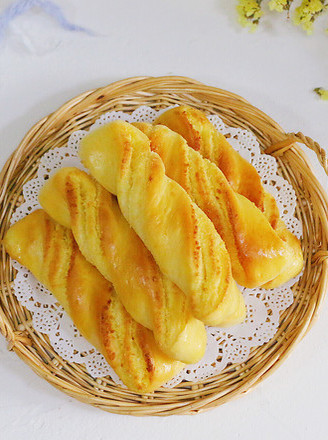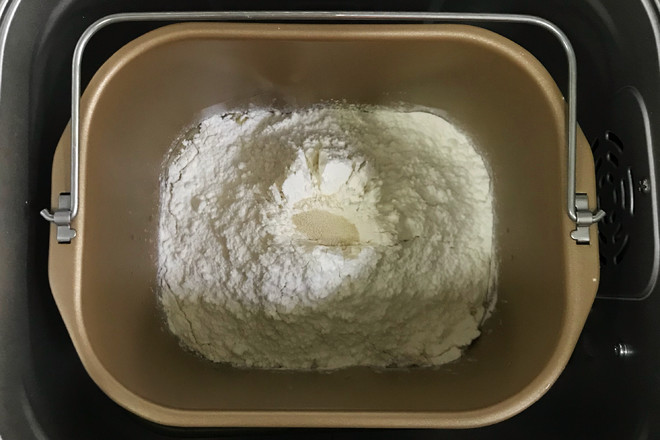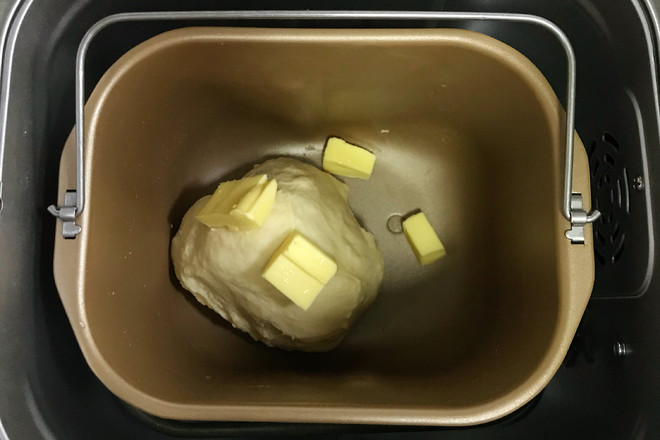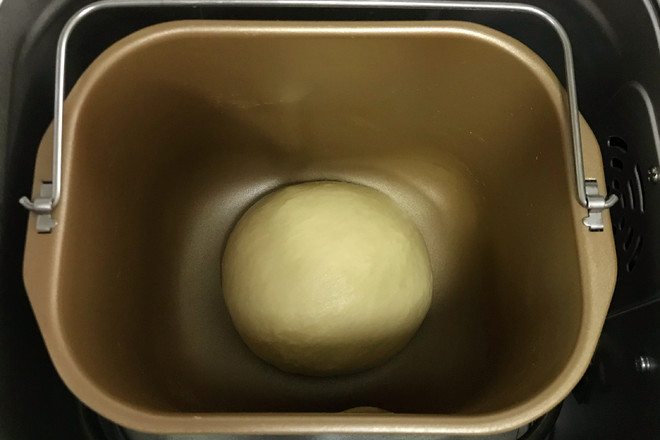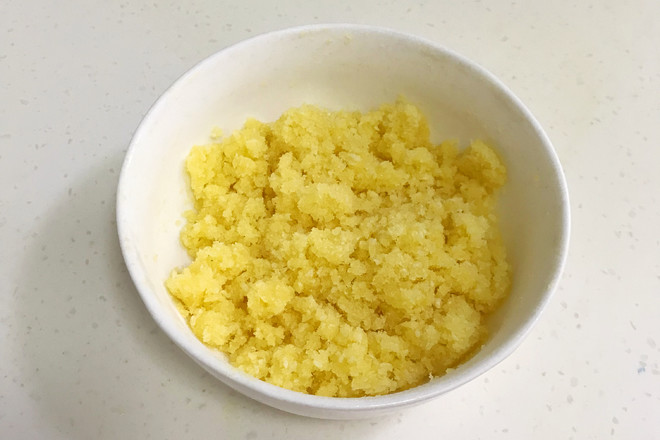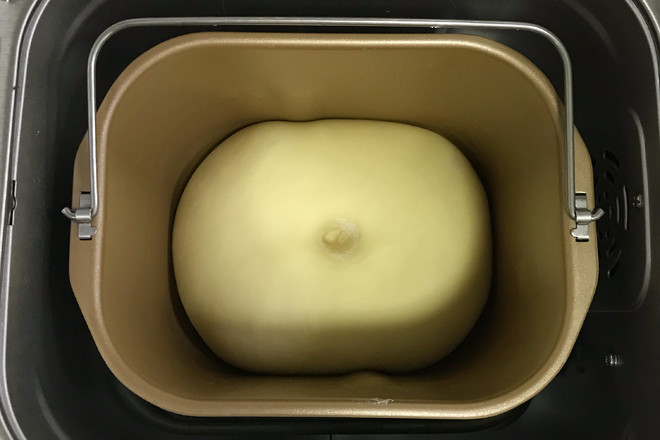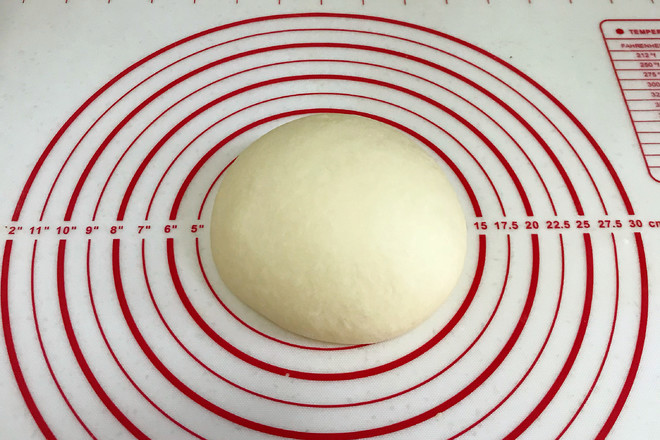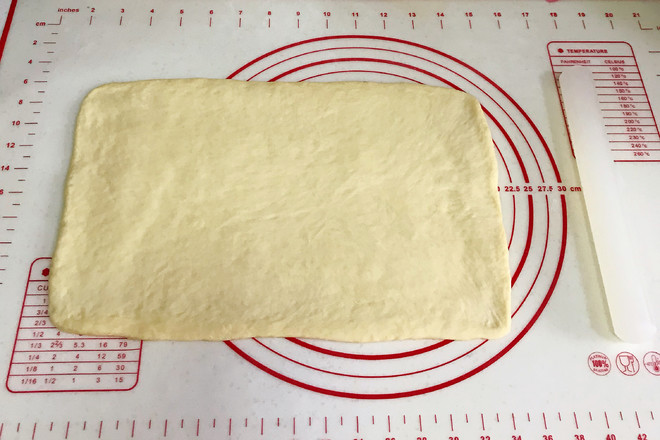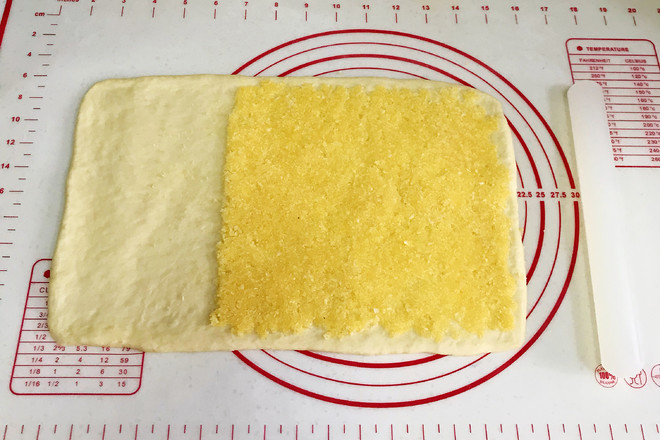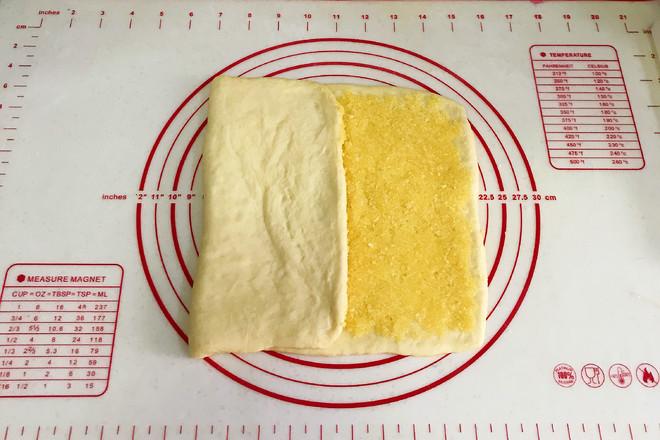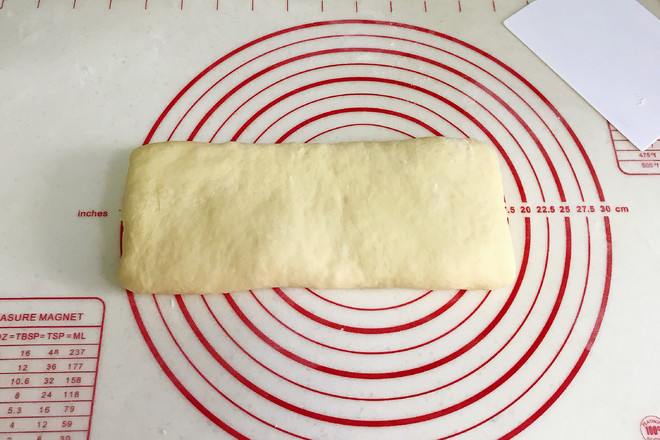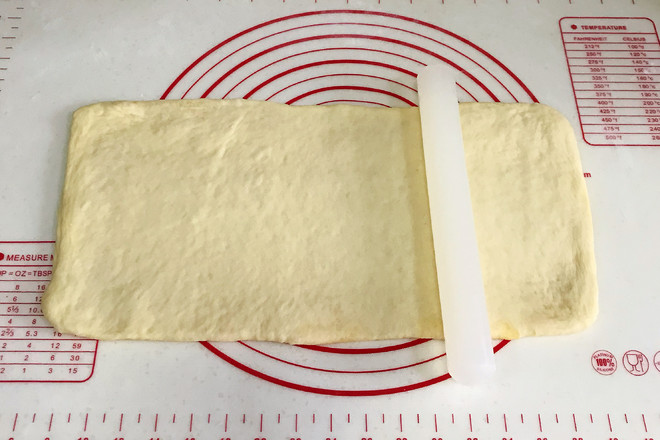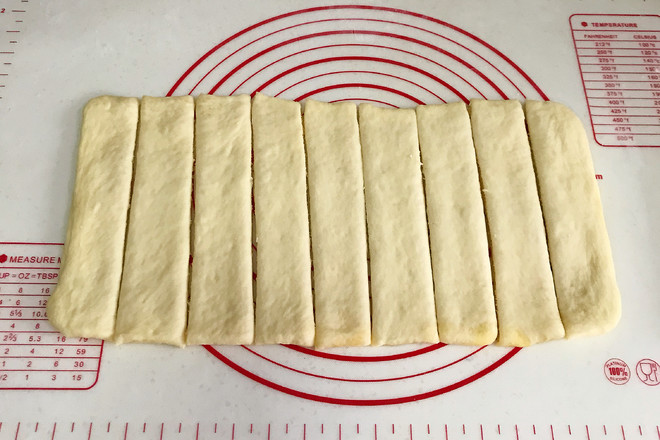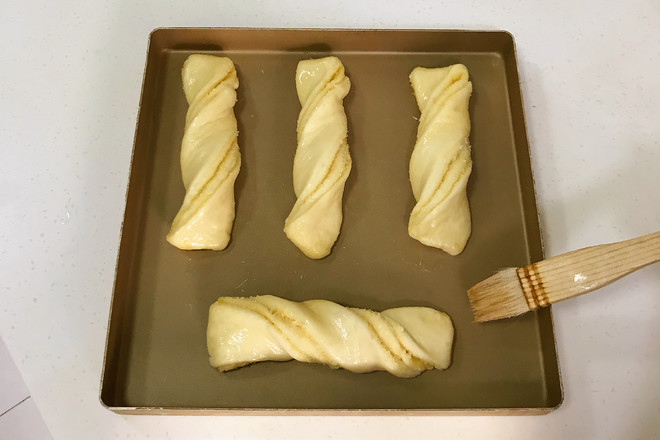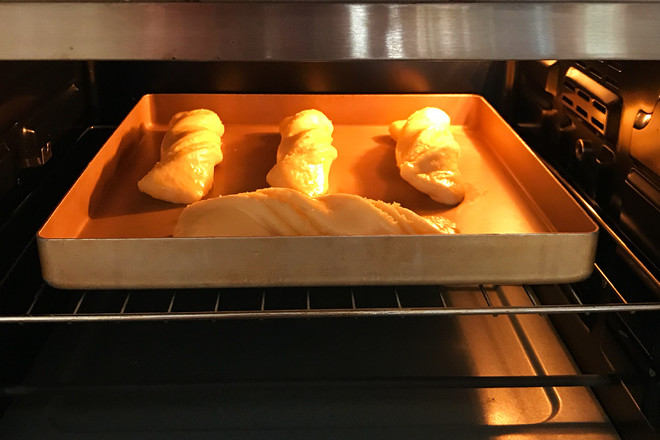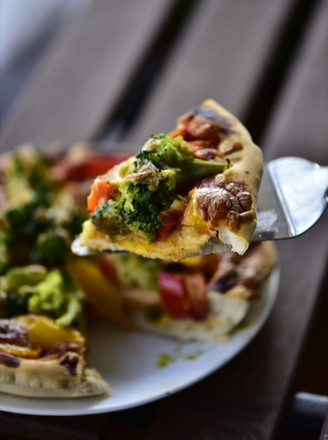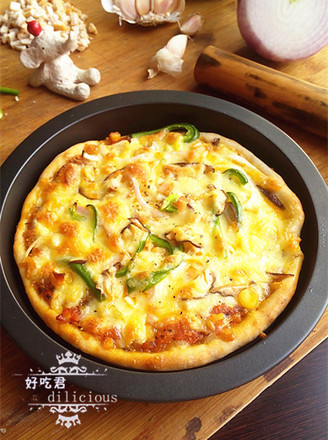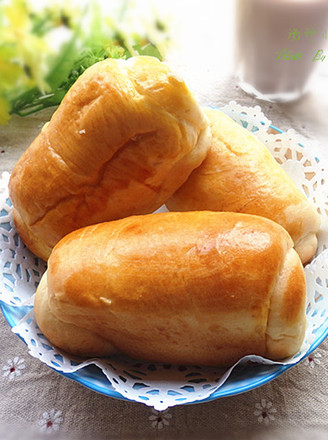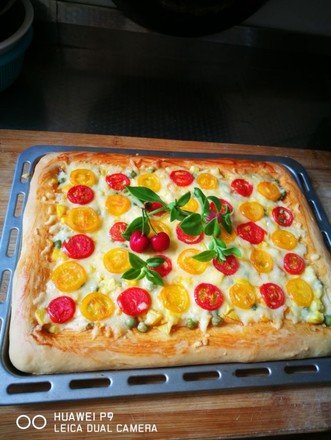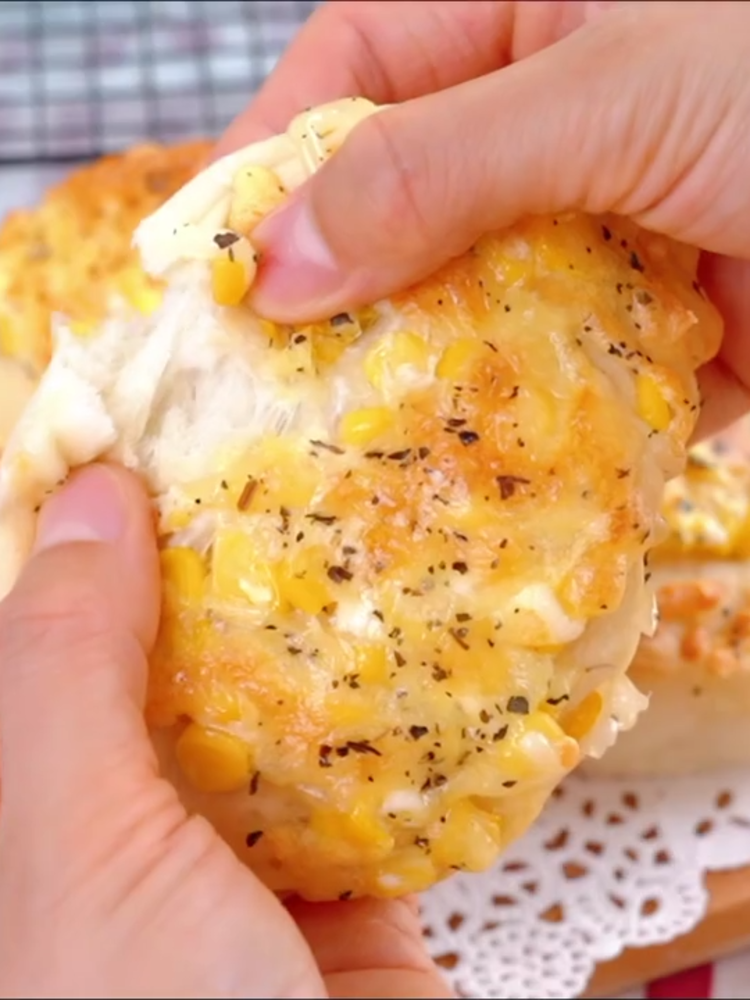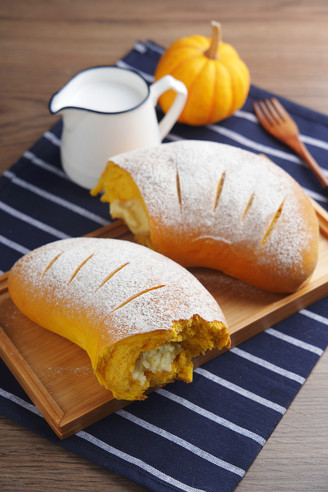Coconut Milk Bar Bread
1.
All the bread ingredients except butter are put into the bread machine (in the order of liquid first, sugar and salt diagonally), dig a hole in the middle of the flour, pour in the yeast powder, and start the dough mixing process.
2.
Knead the dough for about 15 minutes to form, add butter and continue to knead the dough for 20 minutes to the expansion stage.
3.
Just pull out the film, arrange the dough and put it in the bucket of the bread machine for a shot.
4.
Wait for the dough to ferment to make coconut filling, soften the butter, add fine sugar and stir until saccharification, add milk and mix well, then add egg liquid in batches, stir evenly each time, add again, and finally add coconut and mix well.
5.
The dough is twice as large, and the fingers are soaked in flour to poke holes without collapsing or rebounding, and fermentation is complete.
6.
Take out the fermented dough and let it go round and relax for 10 minutes. Cover with plastic wrap to prevent the skin from drying out.
7.
After relaxing, roll the dough into a rectangular shape.
8.
Spread coconut filling on 1/3 of the dough, leaving 1/3 blank.
9.
Fold the 1/3 of the blank to the middle.
10.
Fold it over again to form a rectangular shape in the picture.
11.
Use a rolling pin to slowly roll it out to form a larger rectangle.
12.
Use a knife to cut into even thin strips.
13.
Take a cut long strip of dough, pinch both ends with both hands and twist it two or three times.
14.
Put it in the oven for two times. Put a bowl of warm water on the bottom of the oven to keep the humidity. The temperature of the second fermentation is about 38 degrees and the humidity is 85%. After the temperature is twice as large, take it out and brush the surface of the bread with egg liquid.
15.
Put it into the middle layer of the preheated oven and heat it up and down at 170 degrees for about 15 minutes.
Tips:
1. Each oven is different, the temperature and time can be adjusted according to the actual situation.
2. After the dough is twisted, it must be compacted to prevent it from falling apart during fermentation. However, even if it is compacted, it will spread out a bit, but the effect is not significant. The irregular shape is more characteristic.
3. If the temperature of the oven is too high, pay attention to observation and cover the tin foil with a little color to avoid deep baking of the surface.
4. Different flours and seasons have different water absorption. Please reserve some liquid as appropriate to adjust according to the dryness and wetness of the dough.

